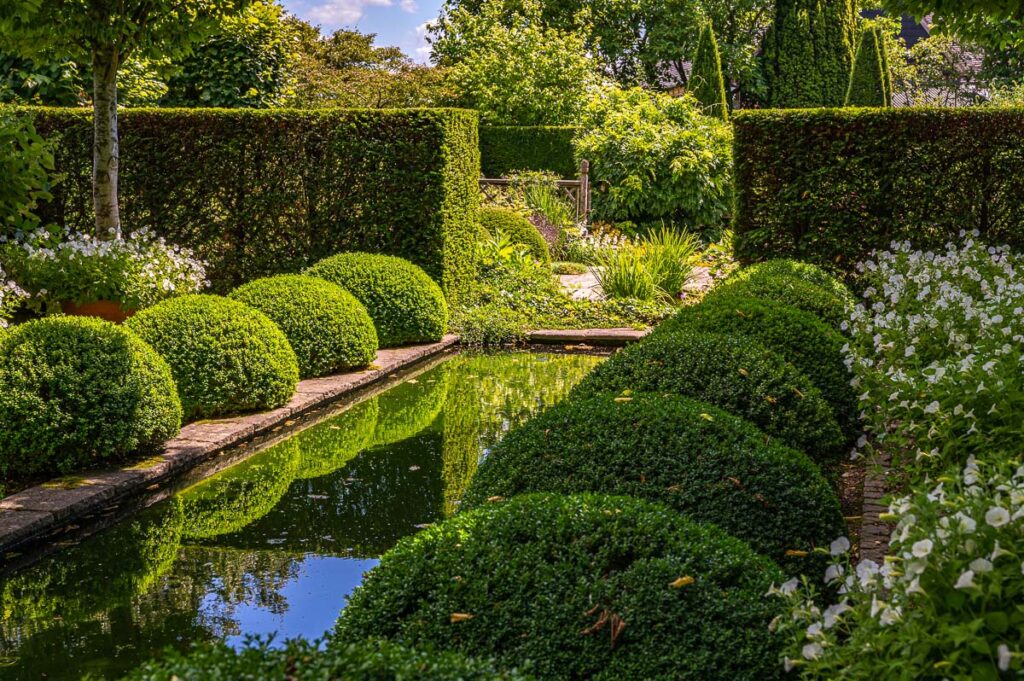
Garden Design Principal Principles
Garden design – the clue is in the name – we design gardens, and like all disciplines of design, the best examples of our work – and that of other garden designers – can always be traced back to the creative application of a few fundamental principles – or rules – that underpin all we do.
Rather unhelpfully, there isn’t a universally accepted specific, set number of these rules; one camp may cite 5, another 12, yet another 9 or 7 but if you were to read all of them you would see a commonality between them. Just as Shakespeare’s “a rose by any other name would smell as sweet” so too for garden design principles – nuances may influence numbers but regardless of what you call them or how you count them – they do all seem to coalesce around a few fundamental ideas; principal principles, if you will.
- Cohesion – other names might be unity, harmony, repetition, colour, style – but this is all about creating something that works as a cohesive whole. Themes work well for cohesion, for instance a contemporary garden or a cottage garden – putting a name to that theme or style brings with it a set of rules to apply to it. You can even ‘room’ a garden within a theme, giving it a different feel in different areas but the theme itself helps maintain harmony and unity throughout supported by repetition of form or texture or colour. Repetition and colour too can play the leading role in achieving cohesion when style or theme may not be so prominent.
- Balance – other names might be order, scale, proportion, symmetry, mass & voids – but this is all about where you ‘put’ different elements within the garden and how they work with all the other elements that are there so that everything feels balanced. Perhaps the easiest way of achieving this is through symmetry, where one side of a garden ‘mirrors’ the other side – everything on one side is balanced out by exactly the same things on the other side – but plants also play a part in balance and the same species and variety of plant can grow at different rates in different parts of the garden. If that is the case for this example, then the balance of the symmetrical design could be ruined by over or under-performing plants. Not every garden works symmetrically, of course, so finding balance and proportionality between elements can be challenging; balancing an existing shed for instance wouldn’t be about siting another shed somewhere else but using something that carries similar visual ‘weight’ or impact in order to achieve balance. This might be a large shrub or a mature tree for instance.
- Movement – other names might be transition, rhythm, flow, line, focal points, destination, perspective, depth, journey – and this is mainly about how you move through the garden, whether physically or by eye, (i.e., when viewing the garden) but also about how the garden itself can be a source of movement. Pathways, arches, benches, water features, sculptures, specimen plants and more all give the eye or the body something to follow or move to, while rustling leaves, grasses swaying in the breeze, trickling water, bird and other wildlife all bring extra layers of movement too adding dynamism to a space.
The challenge for any garden designer is to utilise and combine these ‘rules’ in order to create something that is fit for purpose and looks fantastic too but if you’re getting bogged down with too many garden design principles and don’t know which or how to apply them, the principal principles approach might just help.




